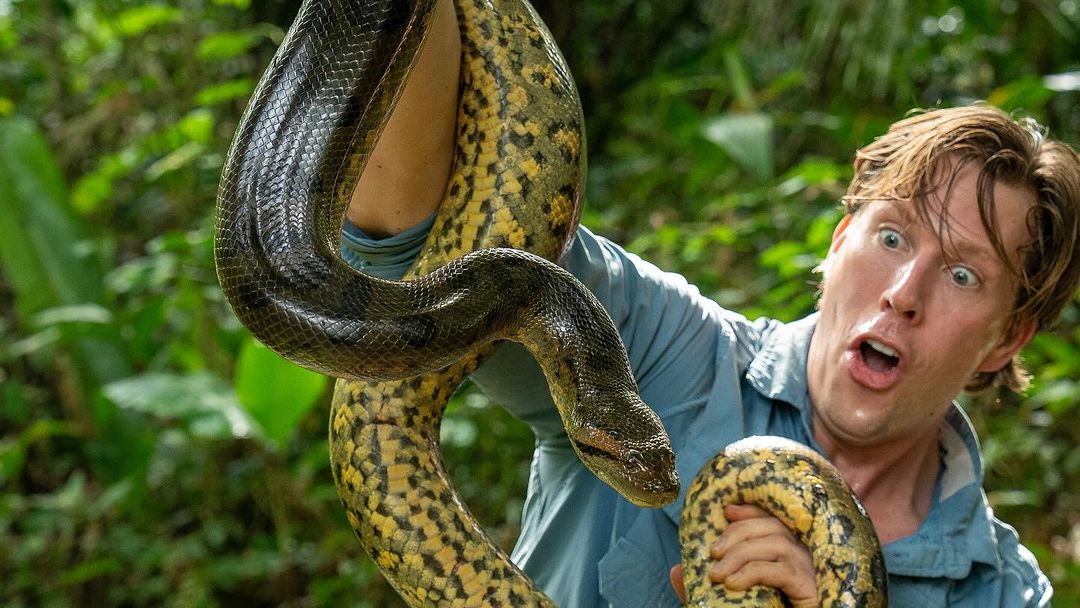This snake species is claimed to be the largest and also heaviest snake in the world.
Scientists have discovered the world’s biggest snake in the heart of the Amazon rainforest. A giant anaconda, which was previously undocumented, was recently found by TV wildlife presenter, Professor Freek Vonk during a National Geographic expedition. The huge anaconda measures 26 feet long, weighs 440 pounds and its head is the same size as a human’s, Independent reported. This snake species is claimed to be the largest and also heaviest snake in the world.
The species was found during filming for the National Geographics Disney+ series ‘Pole to Pole’ with Will Smith. Researchers have given the new species the Latin name ‘Eunectes akayima’, which means the Northern Green Anaconda.
In a video shared on Instagram, Professor Vonk is seen fearlessly swimming alongside the enormous anaconda, showing off his discovery. ”The BIGGEST anaconda I’ve ever seen can be seen in the video, as thick as a car tire, eight meters long, and over 200 kg heavy – with a head as big as my head. From total awe and admiration a monster,” he captioned the video.
Watch the video here:
Notably, these anacondas often move faster than their prey and use their strong bodies to suffocate and swallow them whole.
Previously, the Amazon was thought to host only one species of Green Anaconda, also known as the Giant Anaconda. However, Mr Vonk and his team of 14 other scientists from nine countries, determined that the northern green anaconda is a completely separate species from the green anaconda.
The new species, described in the journal Diversity, diverged from the previously known southern green anaconda about 10 million years ago, differing genetically from it by 5.5 percent.
”Genetically, the differences are massive. They’re five-and-a-half percent different, genetically. To put that into context, we’re about two percent different from chimps,” explained Bryan Fry, the expedition’s leader, a biologist at the University of Queensland, and co-author of the research.
The finding, according to researchers, is pivotal for the conservation of anacondas, which are apex predators and vital to maintaining balance in their ecosystems.

